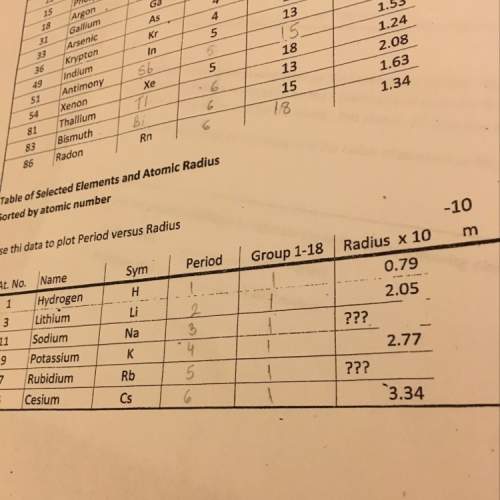
Chemistry, 02.02.2020 23:50 deijiahshatia
Calculate the δg for the following system. then state if the system is spontaneous or not spontaneous.
δh = + 25 kj δs = +5.0 j/k t = 23ãƒâ‚ã‚â°c
a)1.5 x 103 kj; not spontaneous
b)+24 kj; not spontaneous
c)+25 kj; not spontaneous
d)1.5 x 103 kj; spontaneous
e)+24 kj; spontaneous
f)+25 kj; spontaneous

Answers: 2


Other questions on the subject: Chemistry




Chemistry, 22.06.2019 22:30, arodavoarodavo
Which is a characteristic of the electron sea model for metallic bonding? molecular orbitals overlap to produce bands. electrons flow easily between metal nuclei. electrons are in fixed positions in the orbitals. atomic nuclei are arranged in an irregular pattern.
Answers: 3
You know the right answer?
Calculate the δg for the following system. then state if the system is spontaneous or not spontaneou...
Questions in other subjects:




Mathematics, 18.12.2019 18:31



English, 18.12.2019 18:31






